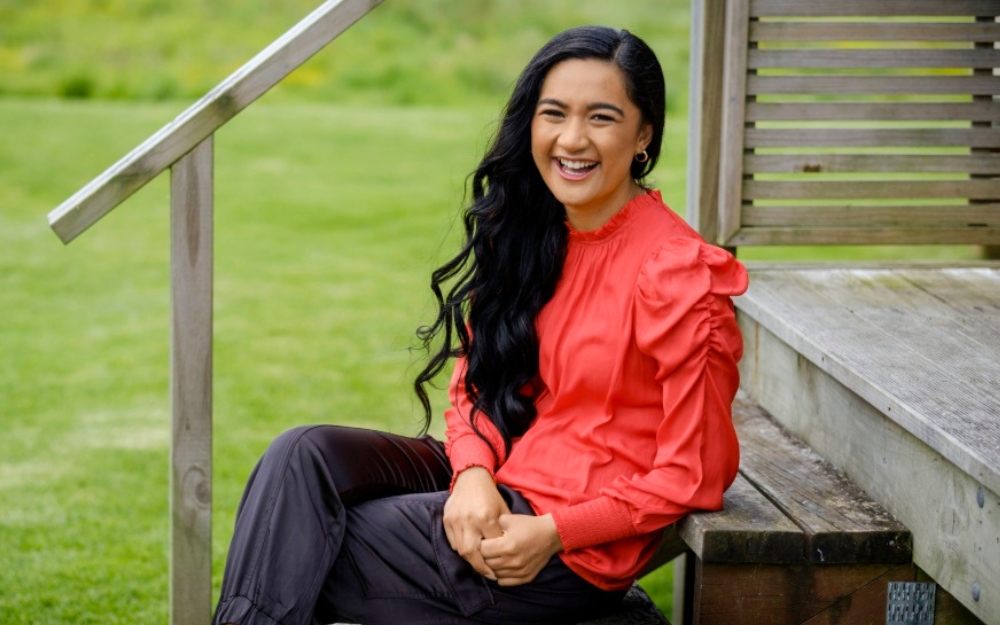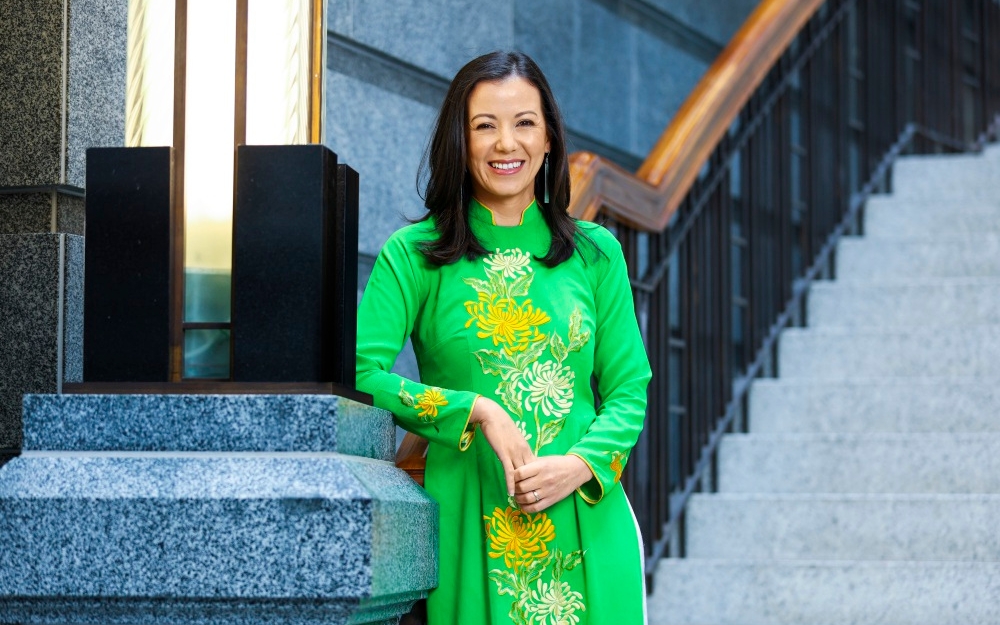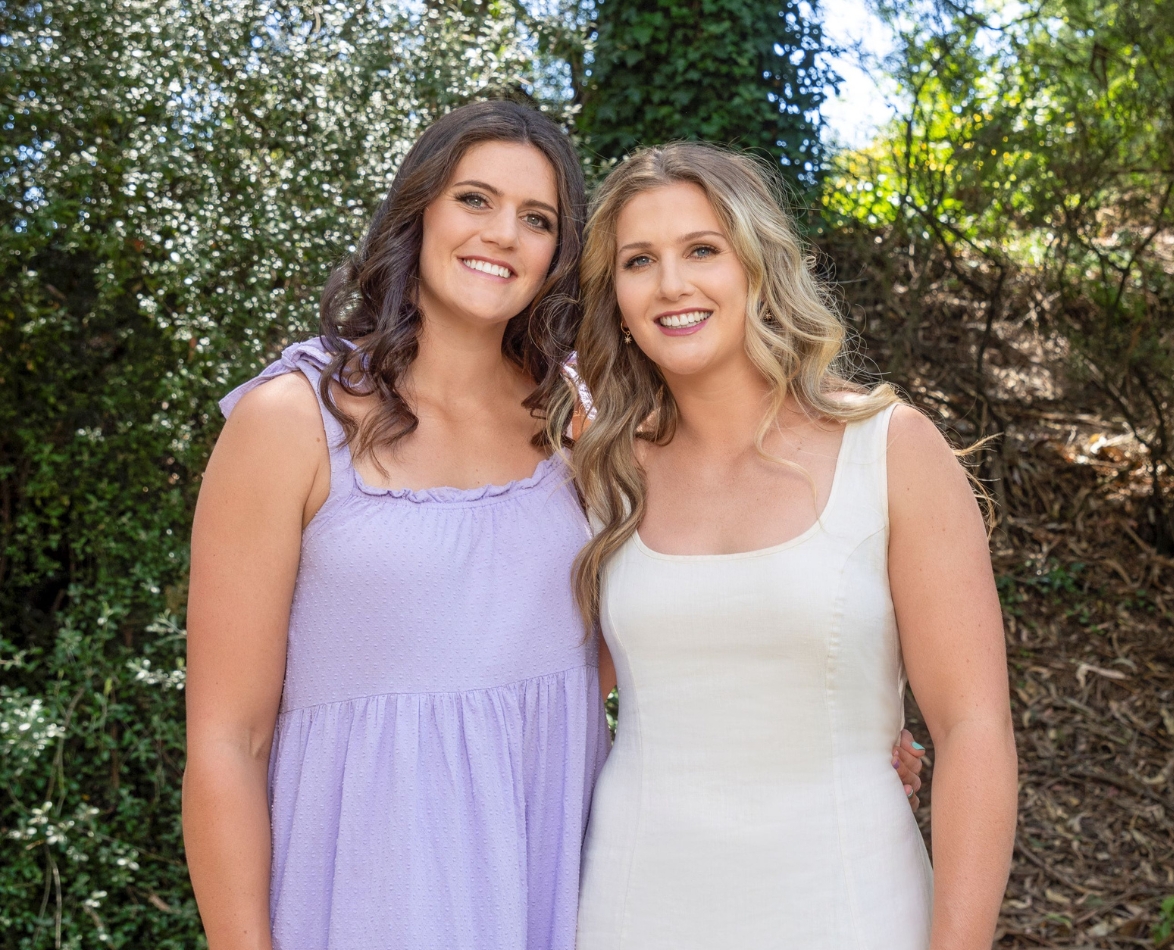More than ever, women are carving out space in traditionally male-dominated careers, challenging gender stereotypes and proving there’s a place for wāhine at the table. Four women at the top of their game spoke to the Weekly about what it takes, why they do it and why they love it.
Alice Brooking
Plasterer, mother of two and content creator with 111,000 followers

Accompanying her plasterer father on the job was just like any other day for a young Alice Brooking, who never planned to follow in her dad’s footsteps.
Instead, as a child, she dreamt of being a poet, and as a teen, she trained to be a make-up artist and a bartender, but neither ever felt quite right.
Now 32, Alice is a mother of two and a professional plasterer, with more than 111,000 followers online watching her share insider tips and insights from her life as a female tradie.
“One of the things I love about my work is seeing a dramatic transformation happen right in front of my eyes, knowing I’ve done that,” says Alice, who’s been in the industry for 14 years and will be forever grateful her dad Kevin suggested she come back home to Wellsford to work with him.
“Bartending wasn’t a healthy job for me, so I moved back and started helping Dad, and as the years went by, I kept doing it. I was at ease and having fun, and that’s what I wanted from life. I never thought I would end up doing it as a job, but Dad’s my inspiration.”
Alice has since discovered a growing international community of female drywalling tradeswomen, which motivated her to start That Plastering Girl, her Instragam page detailing life as a plasterer and mother.
“Once I started to share my work on social media, it really opened my eyes that there are lots of other women doing it all over the world, which blew my mind.”

Her account quickly grew and while most are supportive, Alice does have to contend with combating stereotypes and comments like, “Do you have to make tea for the lads on site as well?”
Laughing, Alice tells the Weekly she mostly works alone and if not, it’s her dad joining to help, so the insult is irrelevant.
At the moment, she is busy plastering her own home during renovations, while caring for her two young sons, Thomas, seven, and Alex, two, and knows her work as a mum is just as valuable.
“My focus and goals are to be a great mum and homemaker,” says Alice, who hopes she and builder partner David are setting a good example for their boys.
“My partner is really hardworking – it’s very inspiring. I hope our kids see how hard we work and our perseverance to get the job done, even when it can be challenging and we want to quit.”
It’s a value her own dad always strived to instil in her too, with his motto, “Have a good work ethic, get the job done and make sure it’s good-quality.”

Drywalling is an incredibly physical job – plastering and sanding walls and ceilings all day, often teetering on 60 centimetre-high stilts – but Alice insists women are just as capable on site as their male counterparts.
She’s only been challenged on this view once in person, when, during the early years of her career, a client refused to pay her the same rate as her father because she was a young woman.
“I was just like, ‘What on earth is going on?’ I had never experienced that before. We did exactly the same amount of work and the same quality.
“Since then, I’ve had women specifically choose me for a job because they’re a mum with a newborn or an older lady and they feel more comfortable with me in the house, and that makes me really happy.”
Alice stopped working while pregnant – “there are too many hazards” – but after giving birth to her second son, demand was so high, clients were offering to look after her baby while she worked!
“I started to take on small jobs when he was six months old and the owners would look after him. It was a lot to juggle, but women and mothers in general are used to doing a million things at once.”
For other women considering a career in trades, Alice advises, “I would just say ‘Go for it’ because once you put in the effort and gain experience, there can be a lot of freedom on the other side of it.”
Francesca Parussini & Na’amah Cheiban
Jazz musicians

Talented jazz musicians Francesca Parussini and Na’amah Cheiban love nothing more than to play to an appreciative audience. But it hasn’t always been an easy road.
As the only two females in the entire year group for their University of Auckland music programme, they’ve had to overcome gender bias in the industry and say the genre is still out of tune when it comes to the representation of women.
At one gig, someone commented to Francesca, “For a tiny little thing, you blow that horn really well.” While the remark may have been well-intentioned, to the 22-year-old, it was yet another example of the ongoing stereotypes she and her peers face.
Francesca – who also plays keyboard and flute, and performed at Womad in 2023 – has studied articles from the 1930s claiming women couldn’t blow a horn if they were wearing a bra, or didn’t want to contort their faces to reach high notes.
While she’s happy things have come a long way since then, she and fellow musician Na’amah are determined to make the jazz world a more inclusive place for women.
The result is Wāhine in Jazz, a network open to women of any age, which also facilitates gigs for members, and advocates for fair pay and hosts workshops with acclaimed female musicians.
“We wanted to organise jam sessions for girls and the idea grew from there,” says Na’amah, 23, who balances being a professional musician with teaching vocals and guitar.

“Now I feel more at ease playing in a comfortable situation and can express myself better, whereas before I felt I needed to over-perform because I was often the only woman and it was really isolating.”
Francesca, who is also a music tutor and fitness instructor, adds, “Typically, jams are male-dominated. They can be really intimidating because everyone’s trying to flex their musicianship competitively. Instead, we wanted to create a safe space to jam with girlfriends in a supportive environment.”
The feedback has been positive, encouraging the friends to keep advocating for change.
“It feels like we’re making progress and hopefully inspiring more females to play jazz,” says Na’amah. “We’re super-excited to see where this group will be in a couple of years.”
To join or find out more about Wāhine in Jazz, visit wijauckland.wordpress.com
Rachel Hall
Lighthouse Gin head distiller

There was a time when Rachel Hall didn’t even like the taste of gin. Now she’s devoted her life to the spirit, working 12-hour days, carefully handcrafting bottles as Aotearoa’s first female head distiller.
“Growing up, I was one of four girls and we never considered being a girl meant we couldn’t do things. If we wanted to drive tractors or motorbikes, we did,” says Rachel, 46, reflecting on her small-town upbringing.
Responsible for every drop coming out of Lighthouse Gin’s distillery, Rachel takes immense care and pride in her craft, hand-zesting the citrus fruit, sewing the botanical-infusion bags herself and driving 100km just to collect pure, soft water from the Remutaka Ranges.
She’s been the head distiller for nine years, but it all began when her children, Elizabeth, now 21, and Joseph, 19, started school in 2010, and she found herself looking for a meaningful way to spend her days.
“I thought, ‘There’s more to life than staying home, vacuuming and washing. I have to do something,’” says Rachel.
Working for an apple juice company, she spotted a still in the back of the shed. It was the beginning of Lighthouse Gin – a passion side project by then-head distiller Neill Catherall.
“I didn’t even like gin, but I was really curious.”
It didn’t take long for Rachel’s curiosity to develop into much more as she learnt everything possible about the craft, eventually picking up a full-time job with Lighthouse.
Then in 2014, Neill retired, the company was sold and Rachel began to look for a new job.
She remembers being completely shocked when instead she was asked to be the new head distiller.
“A lot of people were like, ‘Are you sure you can do it? You’ve got the kids.’ But there was no way I was going to let anyone take this opportunity away from me and I vowed to do everything possible to make it work.”
That was almost a decade ago and, ever since, Rachel has repeatedly proven she’s up to the task. During the pandemic, she distilled and bottled 10,800 bottles of gin in just five weeks when demand skyrocketed and an Australian supermarket started stocking it.
She recently completed a huge US order, is excitedly ramping up production with a new still and is overjoyed to see her gin sweeping the globe.
“People say I will be in my seventies and still distilling,” laughs Rachel. “But I hope to be part of Lighthouse for as long as possible.”
 Emily Chalk, Tony Nyberg
Emily Chalk, Tony Nyberg


